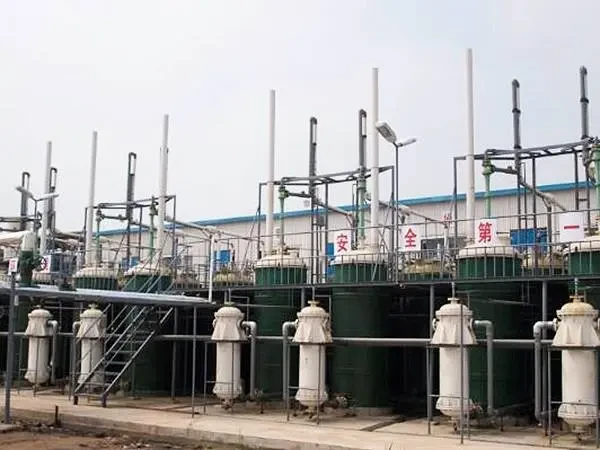



Optimizing the Production Process for Enhanced Polyacrylamide Yield and Quality
The Production Process of Polyacrylamide An Overview
Polyacrylamide (PAM) is a versatile polymer used in various industrial applications, including water treatment, soil conditioning, and as a thickener in cosmetic products. The production of polyacrylamide involves complex chemical processes that require careful control to ensure product quality and efficiency. This article provides an overview of the polyacrylamide production process, highlighting its key steps and the significance of each phase.
1. Raw Material Preparation
The production of polyacrylamide begins with the preparation of raw materials. The primary raw material for polyacrylamide is acrylamide, which is produced from acrylic acid via a two-step process involving hydrolysis and ammoniation. Acrylic acid is reacted with ammonia in the presence of water, resulting in the formation of acrylamide. This compound is highly reactive and can polymerize under certain conditions, which is crucial for the subsequent phases of production.
2. Polymerization Process
The next step in polyacrylamide production is the polymerization of acrylamide. This process can be executed via several methods, including free radical polymerization, controlled radical polymerization, and solution polymerization. Free radical polymerization is the most commonly used method due to its simplicity and effectiveness.
During this process, acrylamide monomers are mixed with a suitable solvent, commonly water, and a free radical initiator. The initiator generates free radicals that initiate the chain reaction, allowing the acrylamide monomers to link together to form long polymer chains. The reaction conditions, such as temperature, pressure, and pH, are carefully monitored to optimize the polymerization rate and control the molecular weight of the resulting polyacrylamide. The desired properties of the final product can be tailored by adjusting these parameters.
3. Post-Polymerization Treatments
After the polymerization reaction, the resulting polyacrylamide solution is subjected to several post-treatment processes. Unreacted monomers and residual initiators must be removed to minimize toxicity and improve the safety of the final product. This is typically achieved through methods such as filtration, centrifugation, and dialysis.
polyacrylamide production process

In addition to purification, the polyacrylamide may undergo further modifications to enhance its properties. For instance, by adding crosslinking agents, manufacturers can produce crosslinked polyacrylamide gels, which are used for applications in the biomedical field and as thickening agents. The specific modifications depend on the intended use of the polyacrylamide.
4. Drying and Formulation
Once purified and modified, the polyacrylamide solution is concentrated and dried to obtain the final product in powder form. Spray drying and freeze-drying are the common methods used for drying. The drying process significantly reduces the moisture content, increases the shelf life, and makes the product easier to transport and handle.
After drying, the polyacrylamide powder may be formulated with other additives to enhance its performance characteristics. These additives can include surfactants, stabilizers, or additional polymers, depending on the desired application. For instance, in water treatment applications, polyacrylamide is often combined with other chemical agents to maximize its effectiveness as a flocculant.
5. Quality Control and Packaging
To ensure that the polyacrylamide product meets industry standards and customer specifications, rigorous quality control measures are implemented throughout the production process. This includes testing for molecular weight, purity, and performance characteristics. Advanced analytical techniques like gel permeation chromatography and rheological measurements are employed to evaluate the quality of the polymer.
Once the product passes all quality tests, it is packaged for distribution. Proper packaging is crucial for preserving the properties of polyacrylamide and ensuring that it remains uncontaminated during storage and transport. Bulk packaging is common for industrial applications, while smaller packages may be used for research or specialty applications.
Conclusion
The production of polyacrylamide is a multifaceted process involving careful control at each stage, from raw material preparation to quality control. As industries continue to seek innovative solutions for water treatment, soil stabilization, and other applications, the demand for polyacrylamide is expected to grow. Understanding the intricacies of its production process is essential for manufacturers aiming to produce high-quality polyacrylamide that meets the evolving needs of the market.
-
Why Sodium Persulfate Is Everywhere NowNewsJul.07,2025
-
Why Polyacrylamide Is in High DemandNewsJul.07,2025
-
Understanding Paint Chemicals and Their ApplicationsNewsJul.07,2025
-
Smart Use Of Mining ChemicalsNewsJul.07,2025
-
Practical Uses of Potassium MonopersulfateNewsJul.07,2025
-
Agrochemicals In Real FarmingNewsJul.07,2025
-
Sodium Chlorite Hot UsesNewsJul.01,2025










